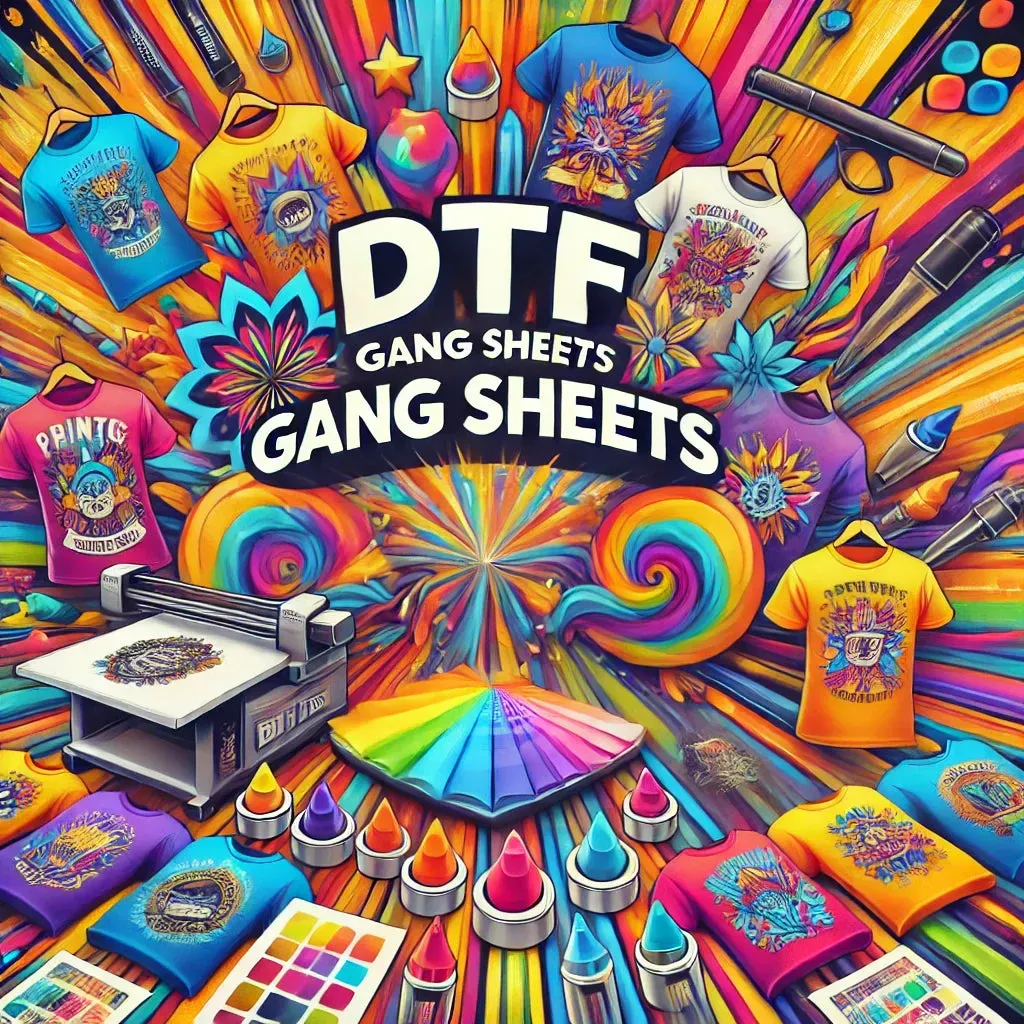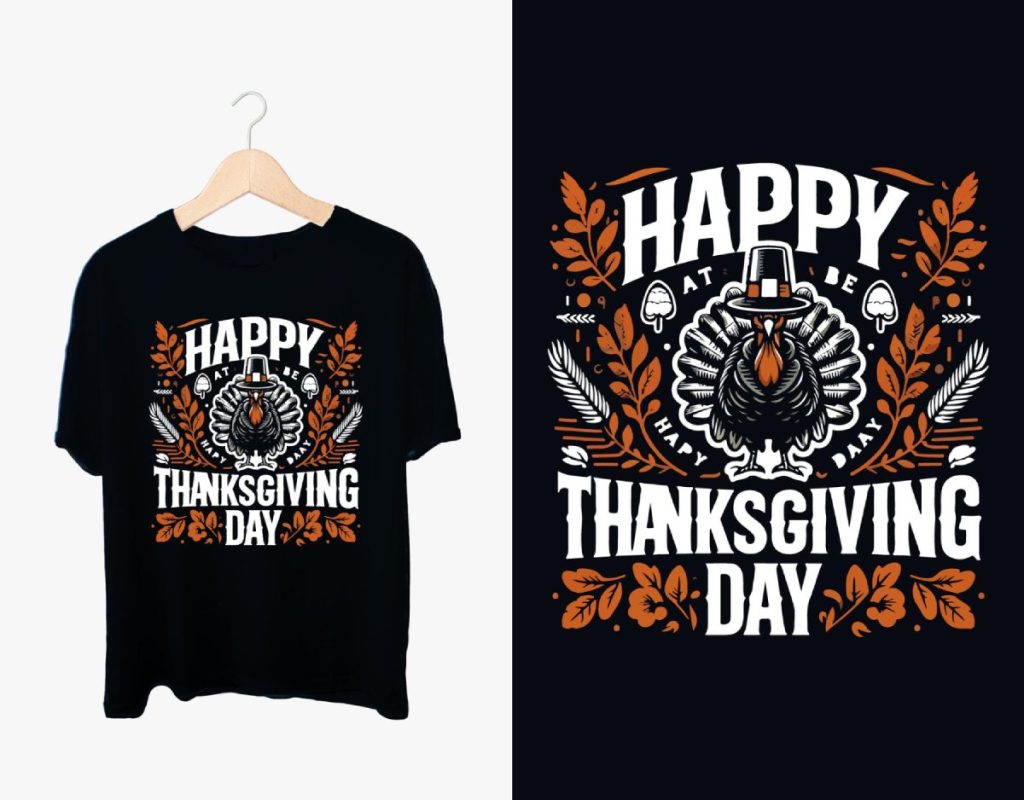When embarking on your journey into custom fabric printing, understanding the concept of **DTF gang sheets** is essential for maximizing efficiency and creativity. DTF printing, or Direct-to-Film printing, has transformed the landscape of fabric design by providing a method to transfer vibrant graphics onto materials seamlessly. Gang sheets, in this context, allow printers to layer multiple artwork designs onto a single film, thereby optimizing the use of resources and streamlining production. This tutorial will guide you through the steps required to create your very own DTF gang sheet, ensuring you capture precision and high-quality results. Let’s dive right in and explore how you can elevate your fabric printing game with effective gang sheet techniques!
In the realm of custom textile design, the term **gang sheet** is synonymous with innovative printing solutions that facilitate the simultaneous creation of various designs. Adopting techniques such as Direct-to-Film (DTF) printing greatly enhances the fabric art experience, allowing creators to produce high-quality transfers on diverse materials. In this context, a gang sheet tutorial paves the way for DIY enthusiasts to master the art of combining multiple graphics into a single print run, thus increasing productivity. Whether you’re just starting or looking to refine your printing methods, understanding how to print gang sheets effectively will empower your projects. Embracing these fabric printing techniques opens doors to creativity while optimizing your workflow.
Understanding the Basics of DTF Printing
Direct-to-Film (DTF) printing is an innovative technology that utilizes transfer films to create stunning designs on fabrics. This method allows businesses and DIY enthusiasts alike to produce high-quality prints with vibrant colors and intricate details. At the heart of DTF printing is the gang sheet, a practical solution for optimizing the use of material by allowing multiple designs to be printed on a single film. This not only enhances efficiency but also reduces waste, making it an environmentally friendly choice for fabric printing.
In DTF printing, the process begins with the preparation of your artwork, which must be carefully designed to fit within the dimensions of the gang sheet. By leveraging design software, users can ensure that all elements are arranged properly and meet the necessary specifications. The popularity of DTF printing has been on the rise due to its versatility and effectiveness in producing custom designs for apparel, home decor, and promotional items. Understanding the core principles of this method can provide you with the foundational knowledge needed to create your own DTF gang sheets.
Step-by-Step Instructions for Creating DTF Gang Sheets
Creating your own DTF gang sheet involves several meticulous steps, starting with artwork preparation. This stage requires the use of professional graphic design tools to ensure that your designs are formatted correctly. By setting your documents to CMYK color mode, you can achieve the most accurate color outputs during printing. Spacing your designs appropriately is equally important; leaving adequate room between them helps avoid any overlap in the final cuts, streamlining the production process.
Once your artwork is ready, selecting the right film becomes essential. High-quality DTF transfer films will not only affect the print’s vibrancy but also the durability of the final product. Many users recommend brands like SkylarTech, known for their superior performance. After choosing the film, it’s crucial to ensure your DTF printer is set up correctly, with appropriate settings adjusted for ink density and print speed, which can influence the quality of your finished gang sheet.
Essential Film Selection Tips for DTF Printing
When it comes to DTF printing, the choice of transfer film can dramatically impact the final product. Not all films are created equal; hence it’s crucial to choose films that are compatible with your printing equipment and the specific types of fabrics you intend to work with. Look for films that are known for their adhesion properties and elasticity, allowing for vibrant prints that maintain quality even after washing.
Common recommendations among experienced users include selecting films with the right thickness and coating for successful adhesion. Testing various brands can provide insights into which ones yield the best results for your specific needs. Ultimately, investing in quality film will enhance your DTF printing capabilities and improve the longevity of your designs on garments.
The Importance of Printer Setup in DTF Gang Sheets
The setup of your DTF printer is a critical component that directly affects the quality of your prints. Proper calibration is necessary to ensure that the printer’s print speed and ink density align with your design specifications. Many users find it beneficial to conduct test prints to fine-tune their settings before embarking on large-scale gang sheets. This practice not only helps minimize errors but also allows you to achieve the best possible color accuracy and detail.
In addition to calibrating print settings, regular maintenance of your printer is essential to avoid clogs and ensure consistent performance. Using high-quality inks designed specifically for DTF printing can further enhance the vibrancy of your designs. By taking the time to properly set up your DTF printer, you can pave the way for achieving stunning prints every time.
Applying Powder Adhesive for Effective Transfers
The application of powder adhesive is a vital step in the DTF printing process, serving as the key component that ensures your designs adhere firmly to the fabric. It’s beneficial to apply the hot-melt powder while the print is still wet, as this creates a stronger bond. Many DIY enthusiasts opt for manual application, but a consistent method using an adhesive applicator can significantly improve accuracy and reduce waste.
Covering all printed areas with adhesive is crucial for optimal transfer success. This step not only secures the ink on the film but also prepares it for the curing process. Skipping this step or applying insufficient powder can lead to poor quality transfers that may not hold up during washing. Therefore, mastering the technique of powder application is key to achieving professional results with your DTF gang sheets.
Final Transfer Techniques and Best Practices
Once the adhesive is cured, the final transfer to your chosen fabric is the moment where careful attention pays off. Heat pressing is the preferred method for applying designs, as it allows for precise control over temperature and pressure. Each fabric may require different settings; thus, consulting the manufacturer’s guidelines for both the adhesive and the fabric type is essential to achieve the best results.
After pressing, always allow the fabric to cool completely before inspecting the transfer. This ensures that the design is adhered properly and has set into the substrate. Regularly refining your transfer technique, along with learning from each print, will help improve your skills and the quality of your finished products, ultimately enhancing your business or personal projects.
Frequently Asked Questions
What is a DTF gangsheet and why is it important in DTF printing?
A DTF gangsheet is a printing method that allows multiple designs to be printed on a single film sheet, optimizing material usage and increasing production efficiency. It is important in DTF printing as it enables custom fabric designs to be created efficiently, reducing costs and waste.
How do I create a DIY DTF gangsheet at home?
To create a DIY DTF gangsheet at home, start by preparing your artwork using graphic design software, ensuring it’s in CMYK color mode. Select high-quality DTF film, set up your DTF printer properly, print your designs, apply a hot-melt powder adhesive while the print is still wet, then cure and cut the sheet before transferring the designs to fabric.
What are the key steps in a gang sheet tutorial for DTF printing?
The key steps in a gang sheet tutorial for DTF printing include: preparing your artwork in graphic software, selecting the appropriate film, setting up your DTF printer, the printing process, applying powder adhesive, curing the adhesive, cutting out the designs, and finally transferring them onto your fabric.
Can you explain how to print gang sheets effectively for fabric printing?
To print gang sheets effectively for fabric printing, ensure designs are well-spaced to avoid overlaps, use high-resolution settings for crisp detail, apply the adhesive evenly while the print is wet, and follow proper curing temperatures to enhance adhesion before cutting and transferring the designs.
What fabric materials can I use with DTF gang sheets?
DTF gang sheets can be used on various fabric materials, including cotton, polyester, and cotton-poly blends. These fabrics are known for their ability to respond well to the heat transfer process involved in DTF printing.
What are the common challenges in printing DTF gang sheets and how can I troubleshoot them?
Common challenges in printing DTF gang sheets include ink bleeding, improper adhesion of the powder, and misalignment during cutting. To troubleshoot, make sure to adjust printer settings for ink density, ensure proper application of adhesive, and calibrate cutting machines accurately to prevent miscuts.
| Step Number | Key Action | Details |
|---|---|---|
| 1 | Preparation of Artwork | Use graphic software like Adobe Illustrator. Design in CMYK and save as PNG or TIFF. |
| 2 | Film Selection | Choose high-quality DTF films; brands like SkylarTech and Digi-Screen are recommended. |
| 3 | Printer Setup | Properly configure your DTF printer, adjusting speed and ink density for quality output. |
| 4 | Printing Process | Print designs with sufficient space; use high-resolution settings. |
| 5 | Applying Powder Adhesive | Add hot-melt powder adhesive while the print is wet for best results. |
| 6 | Curing | Cure adhesive using heat press; follow manufacturer’s instructions for settings. |
| 7 | Cutting | Use cutter/plotter for precision cuts; calibrate equipment correctly. |
| 8 | Final Transfer | Apply designs to fabric using heat press; adhere to recommended pressure and temperature. |
Summary
DTF gangsheet creation is an essential skill for anyone interested in custom fabric printing. By mastering the above steps, you can enhance your printing processes, ensuring precision and efficiency in producing multiple designs on a single sheet. Engaging in the vibrant community around DTF gangsheet printing will further help you refine your skills and keep up with evolving trends.



